Key takeaways:
- Reparations politics involves amplifying the voices of marginalized communities and addressing historical injustices through various forms of restitution.
- Impactful petitions mobilize public support and highlight systemic issues, fostering dialogue and community solidarity around reparative justice.
- Researching key grievances, utilizing emotional storytelling, and crafting persuasive language are critical for effective advocacy in reparations efforts.
- Engaging personally with supporters and utilizing social media can significantly enhance the reach and impact of petitions.

Understanding reparations politics
Reparations politics is a complex and often contentious issue, rooted deeply in historical injustices. I remember attending a town hall meeting where people passionately shared their experiences of systemic inequities. Listening to their stories made me realize how often the narrative is shaped by those directly affected, highlighting the importance of amplifying their voices in the reparations discourse.
It’s fascinating to see how reparations can take many forms, from financial compensation to policy changes aimed at rectifying historical wrongs. Have you ever considered what true justice looks like? For many, it’s about more than just monetary payments; it’s about acknowledgment, healing, and the rebuilding of community trust—a journey that requires genuine commitment and deep listening.
In navigating reparations politics, I often find myself reflecting on the long-term implications of these discussions. Each petition, each advocacy effort is a step towards recognizing not just the debts of the past, but also the promise of a more equitable future. It’s not just about politics; it’s about people and their rights to dignity and reparative justice.
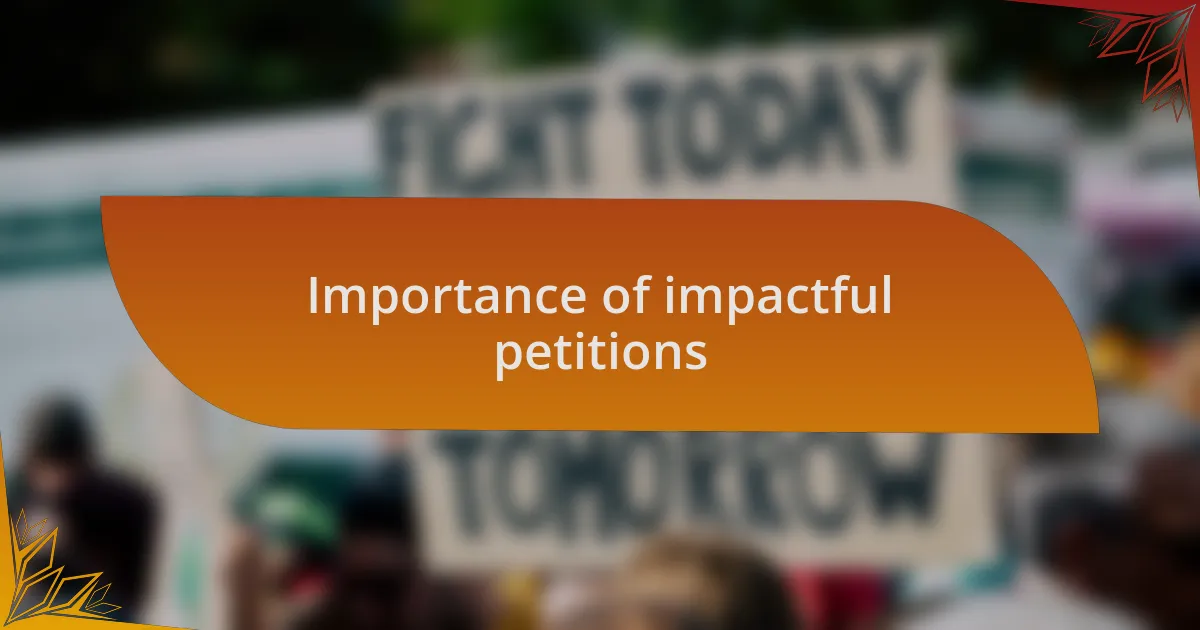
Importance of impactful petitions
Impactful petitions play a crucial role in the reparations movement by mobilizing public support and ensuring that the voices of marginalized communities are heard. I recall how a local petition helped galvanize community members into action—it was inspiring to witness how collective voices can pressure policymakers to confront uncomfortable truths. Isn’t it powerful to think that a simple document can ignite change and foster a sense of solidarity?
Beyond mere signatures, effective petitions can change the narrative around reparations. When I signed a petition demanding an investigation into discriminatory practices in housing policies, I felt like I was part of something bigger than myself. It was a reminder that each signed name represents a commitment to justice and a refusal to accept the status quo.
Moreover, impactful petitions often lay the groundwork for broader movements. They not only highlight specific grievances but also educate the public about systemic issues. I often find myself reflecting on the impact of raising awareness; petitions can spark dialogue and prompt individuals to question their own roles in perpetuating inequality. Isn’t it interesting how a single petition can lead to a ripple effect, inspiring further advocacy and discussion?
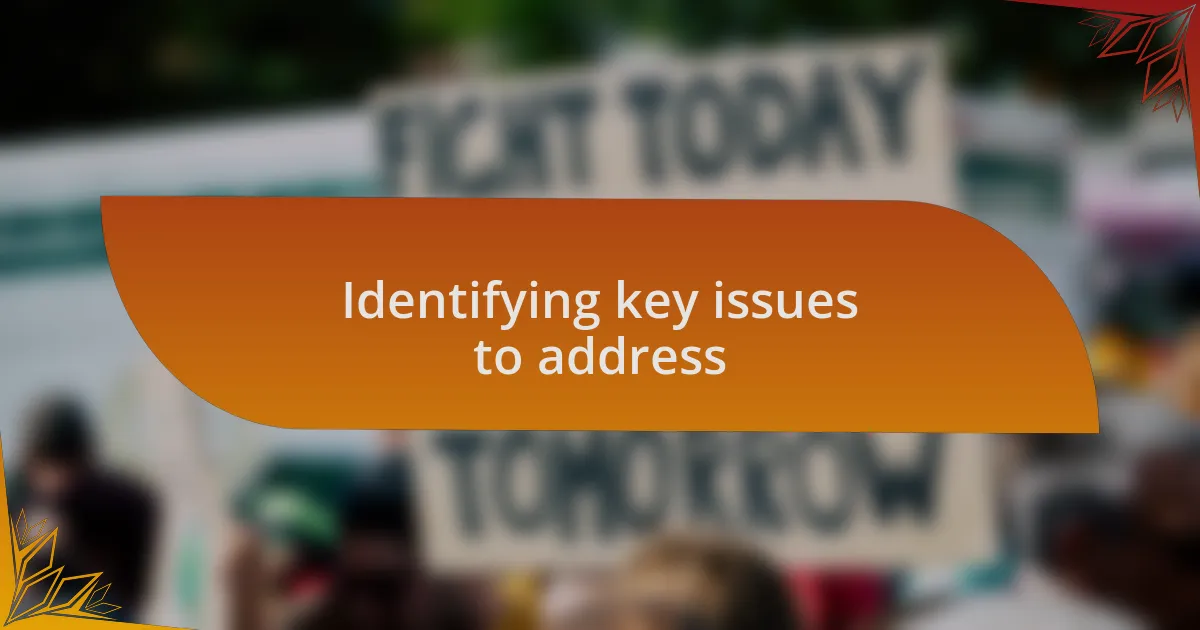
Identifying key issues to address
When identifying key issues to address in a petition, it’s essential to consider the specific grievances faced by marginalized communities. I once attended a community meeting where residents shared their experiences with police brutality. Hearing their stories was both moving and eye-opening, reinforcing how vital it is to bring personal narratives to the forefront. Isn’t it amazing how the stories of individuals can highlight systemic injustices that require urgent attention?
While brainstorming issues, I recommend looking for intersections among various societal factors, such as education, housing, and healthcare. For instance, a local initiative aimed at addressing educational disparities opened my eyes to how deeply interconnected these issues are. I vividly remember a vivid discussion about how inadequate educational resources contribute to long-term economic disparities. How can we effectively advocate for reparations without addressing the root causes that perpetuate these cycles of inequality?
Lastly, engaging with historical context is crucial. A deeper understanding of past injustices equips us to craft petitions that resonate more profoundly with people. I realized this firsthand while researching reparations history; it became clear that acknowledging the legacy of slavery and colonialism is not just important—it’s essential. Understanding these contexts invites us to ask ourselves: how can we create meaningful change if we don’t fully grasp the lessons of our history?
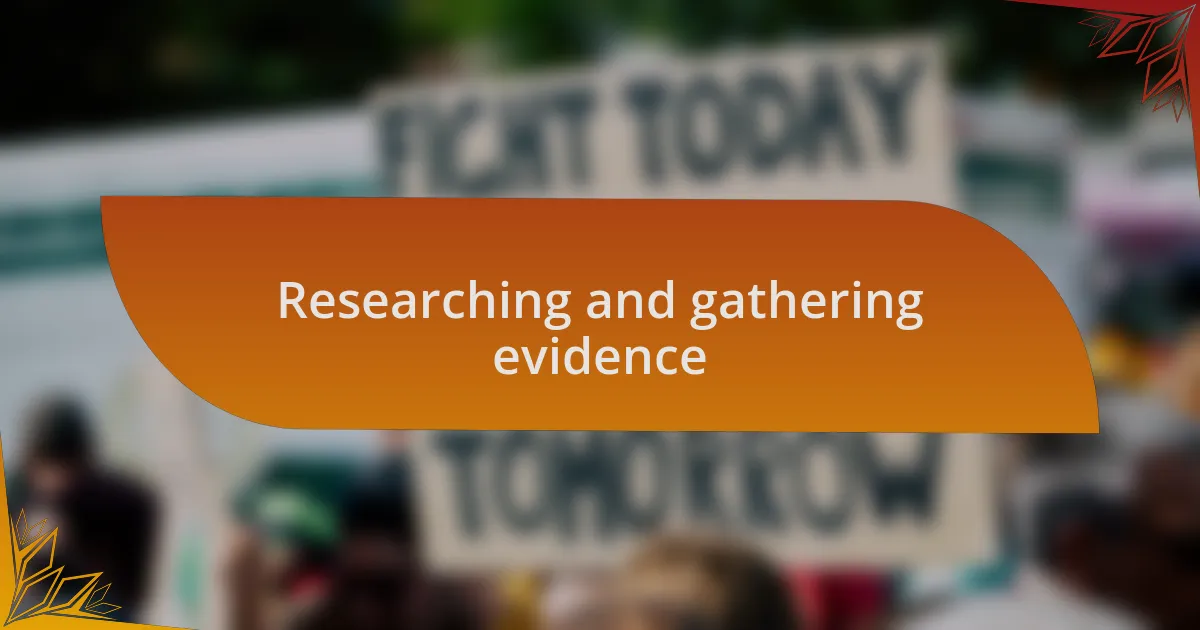
Researching and gathering evidence
When diving into research for a petition, I often turn to primary sources. For example, I remember carefully combing through historical documents related to reparations, and it became clear how these sources can offer invaluable insights. Don’t you find it fascinating how first-hand accounts and official records can illuminate the depth of injustices that still impact our society today?
Another effective method is compiling data and statistics that underscore your arguments. I once used a series of reports detailing economic disparities faced by affected communities to strengthen my petition. It struck me how a well-placed statistic could transform an emotional plea into a compelling call to action. Isn’t it interesting that numbers can speak volumes, providing a clearer picture of the systemic issues at play?
Networking with activists and scholars engaged in similar work has always enriched my understanding. I recall a discussion with a fellow advocate who shared powerful case studies of successful reparations petitions. Their insights opened my eyes to different strategies and the importance of tailoring evidence to your audience. Have you ever considered how collaboration can amplify your message, ensuring that it’s backed by a well-rounded body of evidence?
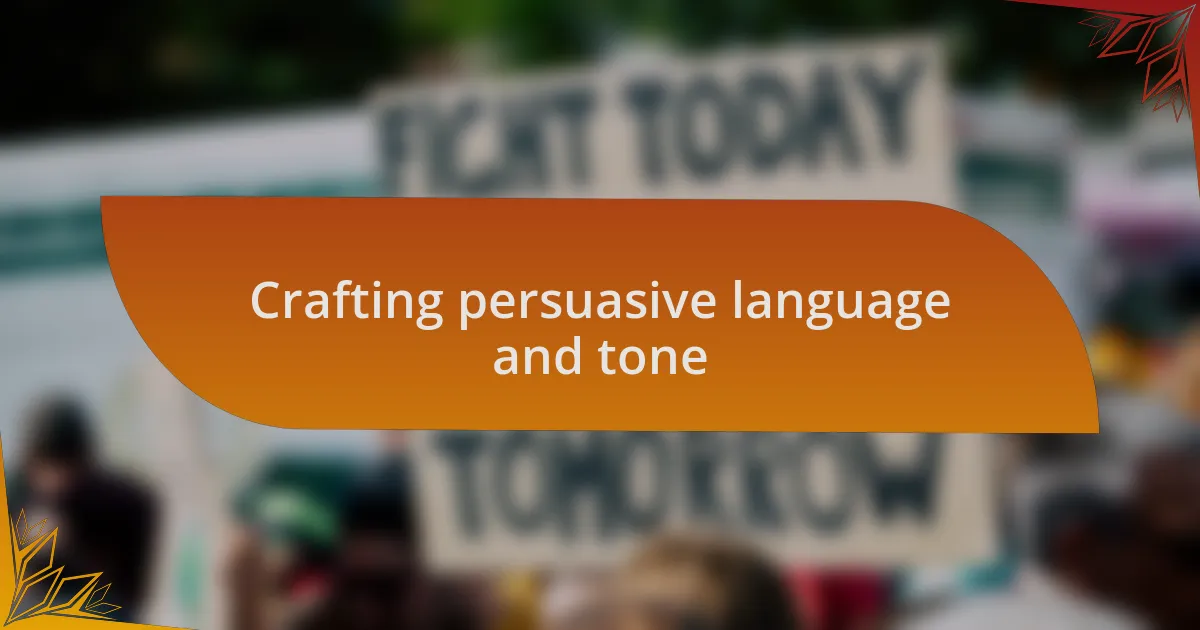
Crafting persuasive language and tone
When creating persuasive language for a petition, I’ve found that a conversational tone can resonate deeply with readers. I once wrote a petition for community reparations, focusing on using language that felt personal and relatable. Phrasing like “we deserve” rather than “they must” creates a collective sense of urgency, inviting readers to join the cause rather than feeling alienated by the message. Isn’t it crucial to foster a sense of belonging in advocacy?
Additionally, I’ve learned the power of emotional storytelling. When I included a narrative about a family that faced socioeconomic challenges due to systemic inequities, the petition’s tone shifted dramatically. This approach made the issue more tangible, reminding readers that these are real people with real struggles. Have you ever noticed how a touching story can evoke empathy and prompt action?
Finally, it’s essential to strike a balance between urgency and hope in your language. While it’s vital to convey the seriousness of the situation, I always strive to inspire action by emphasizing potential positive outcomes. I remember ending a petition with a call to unity, urging readers to envision a future where justice prevails. Doesn’t it feel empowering to think that our collective efforts can lead to meaningful change?
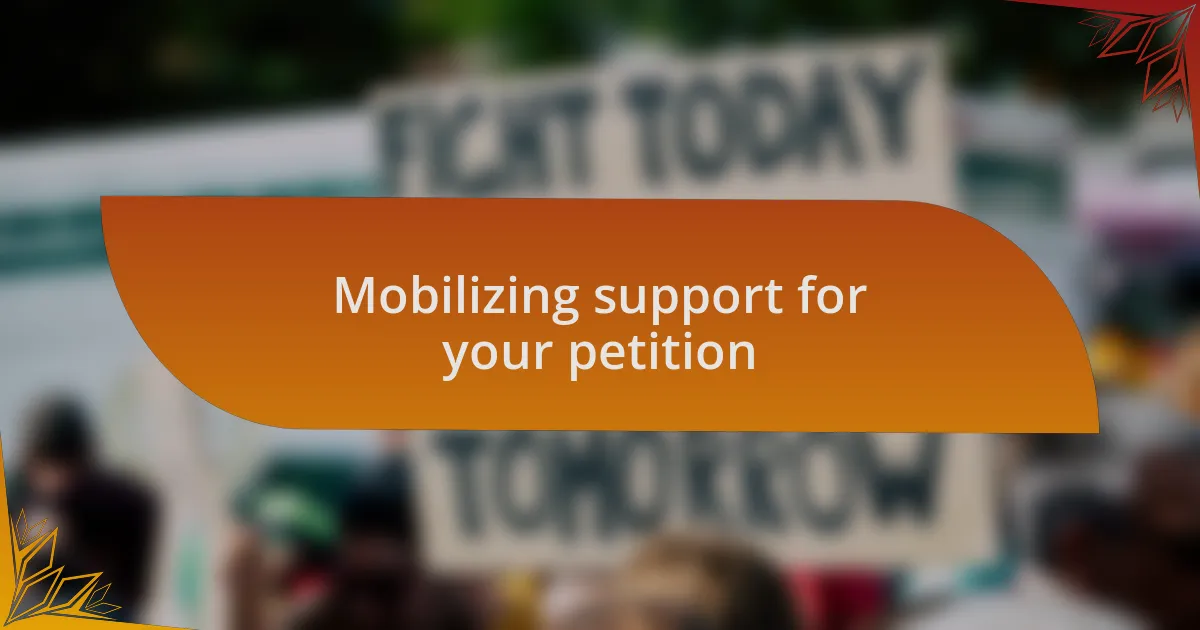
Mobilizing support for your petition
Mobilizing support for your petition requires a strategic approach that goes beyond just sharing the link. When I launched a petition for educational reparations, I reached out personally to friends and community members, explaining the importance of their support. It’s fascinating how personal engagement can spark interest; people often feel more inclined to sign when they understand the direct impact their actions can have on their community.
Creating a sense of community around your petition is vital. I once organized a small gathering where we discussed the petition’s goals and shared stories of individuals affected by inequality. This intimate setting not only sparked discussions but also encouraged attendees to spread the word further. Have you ever noticed how passionate conversations can ignite a fire within people, pushing them to become advocates themselves?
Social media can be an incredible tool for mobilization. When I shared updates on progress and personal stories behind the petition, I saw my network grow. Using hashtags and tagging influential figures or organizations not only expanded my reach but also made the petition feel alive and relevant. It’s a reminder that each share can exponentially increase visibility, and that small actions contribute to a larger movement.